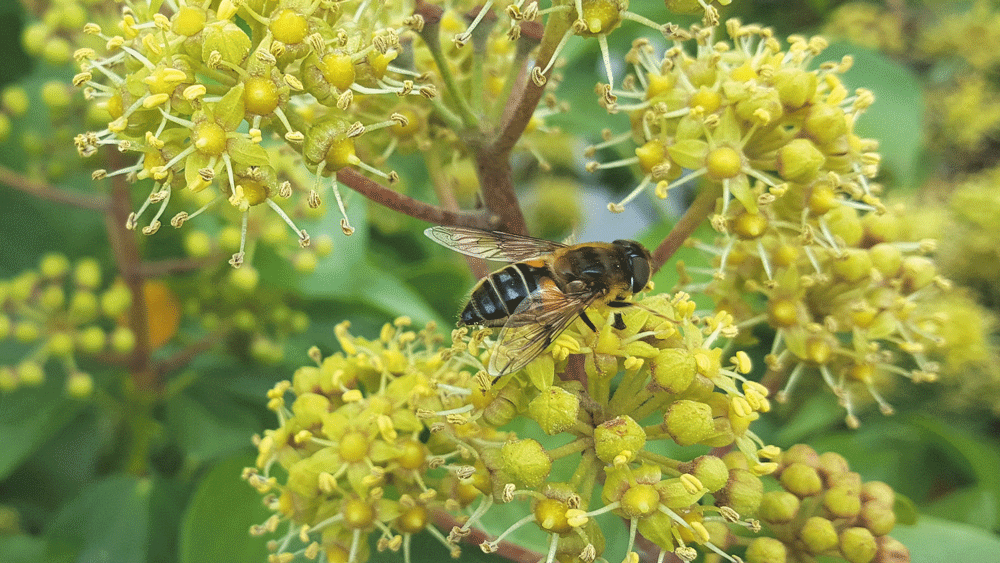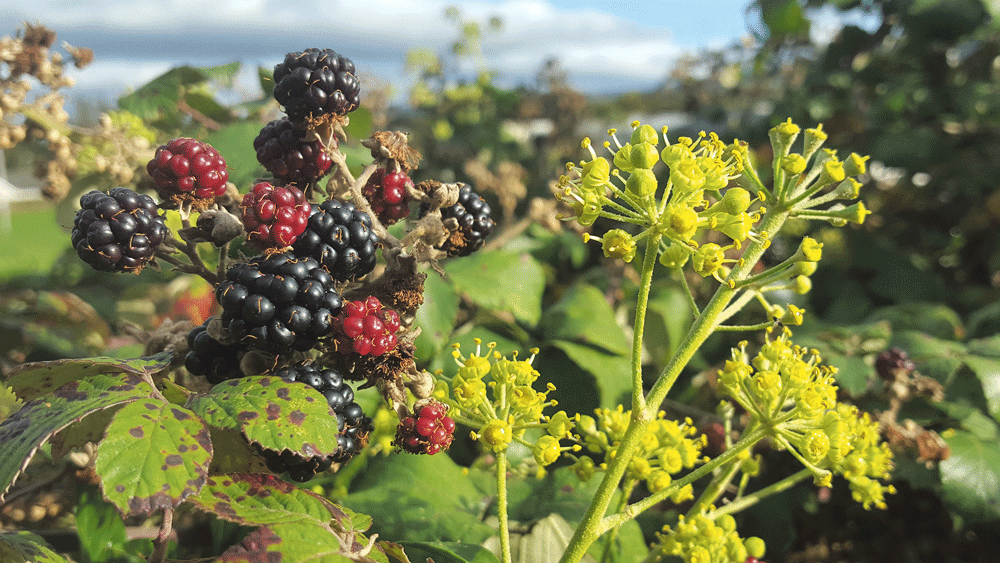

Nature on our doorsteps: Bountiful Ivy
Rosaleen Dwyer is the County Heritage Officer at South Dublin County Council – every week she gives us an insight into the natural heritage around us and the beautiful biodiversity of the plants and creatures.
Some people see Ivy as an annoyance as it scrambles over trees, walls, and sheds.
Some believe that it lives like a parasite, sucking nutrients from the trunks of trees and causing them to die.
Other people like Ivy, seeing it as a living green covering for bare concrete walls, especially if the Ivy is one of the variegated yellow and green-coloured varieties.
Ivy is not a parasite. It has its own root system, and it draws its own nutrients from the soil.
It uses walls and trees merely as a scaffolding, as a base upon which it clings tightly so that it can bring its twining stems and leaves up into the sunlight.
Ivy provides a wide range of benefits to biodiversity.
Its dense leafy growth offers a home for many insects and spiders, while wrens, robins, and blackbirds will nest amongst its leafy branches.
Bats will also roost in ivy-clad trees in summertime.
Ivy is known as being an important ‘stop-gap’ plant, flowering and fruiting at a time of the year when most wildflowers are long finished.

Blackberries and flowering Ivy provide food for wildlife in the late autumn hedegrows
Its unusual-looking pom pom flowerheads bloom in autumn, from September to the end of October.
Because they are very rich in pollen and nectar, the tiny yellow flowers are very important for late season bees, hoverflies, wasps, and butterflies.
The wide availability of Ivy’s abundant rich food helps these insects survive a little longer through autumn.
These insects, in turn, continue to be a food source for birds into early winter.
The insects pollinate the flowers as they feed, causing Ivy’s purple berries to form.
These berries are a critical source of food for wild birds in the hungry gap of the year in January and February, when all other hedgerow berries are long gone.
A heavily laden Ivy bush can help birds survive until springtime when other food sources start to become available once again.
Ivy is therefore a bountiful plant, bringing a range of critical benefits to wildlife throughout the year.

